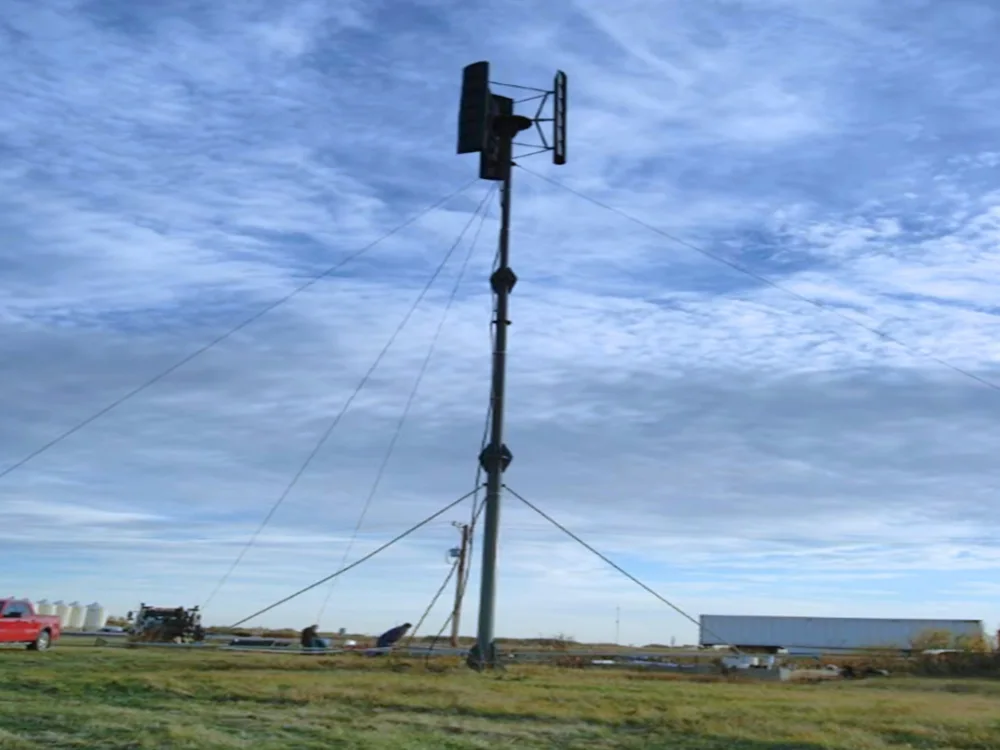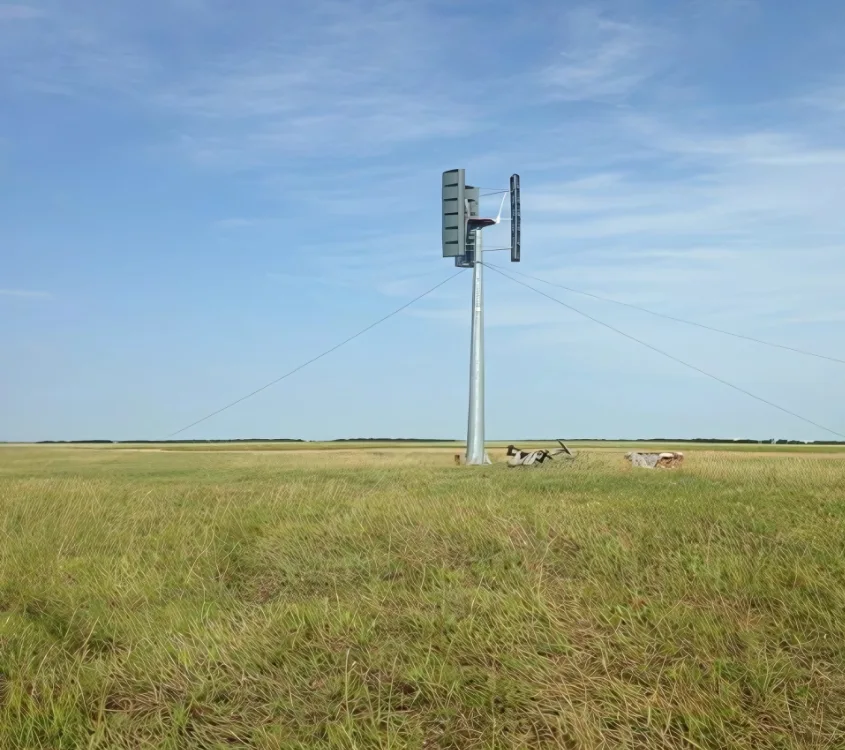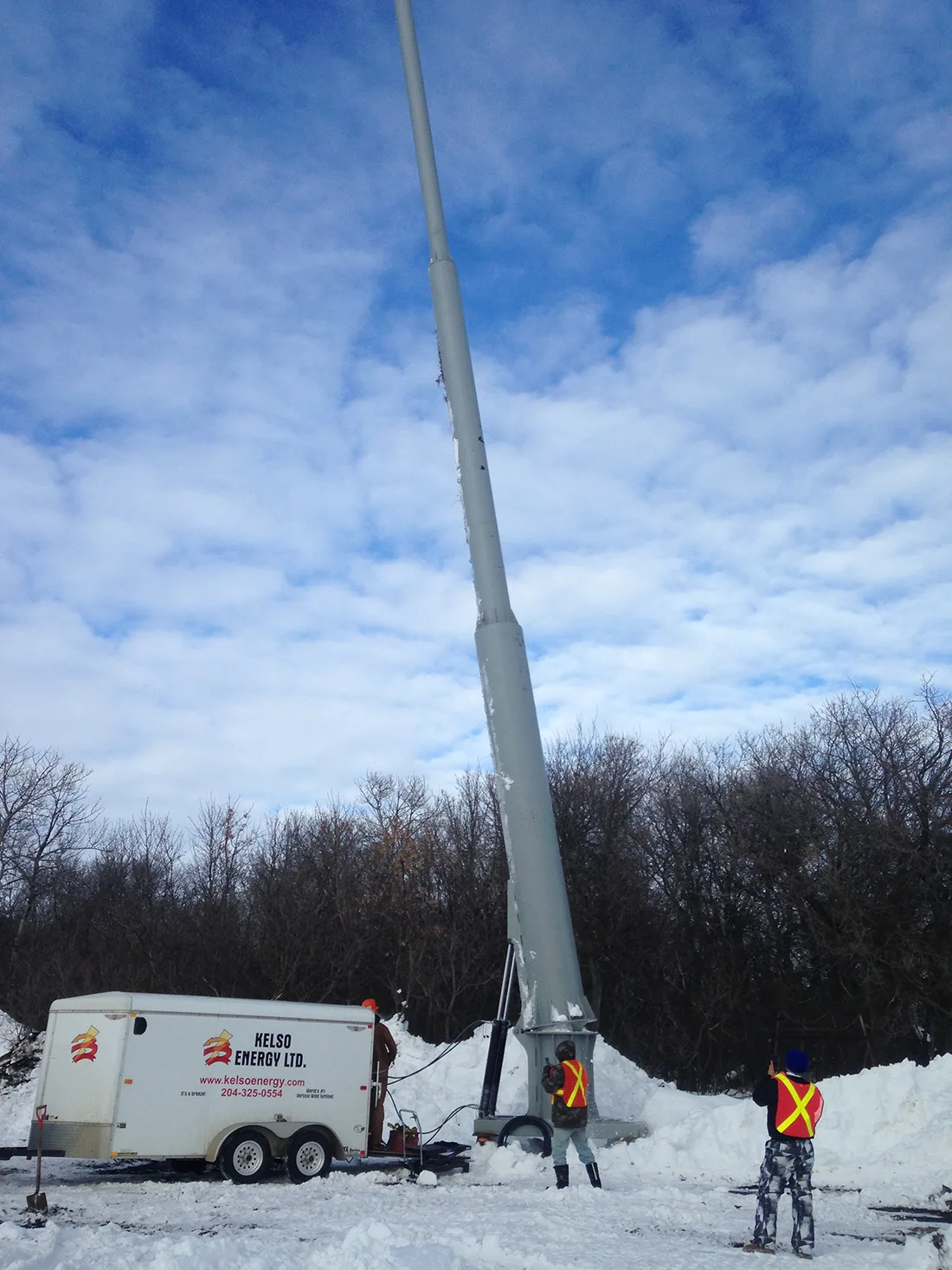
How Mundo-Power Could Change Their Minds
Southwestern Ontario communities aren’t against clean energy—they’re just wary of the only solution they’ve seen so far: towering industrial wind farms. In places like Zorra, East Zorra-Tavistock, and South-West Oxford, residents voted against “massive eyesores” that clash with rural landscapes and threaten farmland, wildlife, and community cohesion.
That resistance reveals a critical failure in the approach taken by traditional large-scale wind energy projects: they fundamentally ignore the local values, daily lives, and long-term interests of the communities they aim to serve. Rural Ontario requires renewable energy solutions that are thoughtfully designed, respectful of local sensibilities, and appropriately scaled to meet the needs of the community.
Mundo-Power’s solution directly addresses the unique concerns of rural Ontario (and beyond), delivering renewable power without compromising community character or integrity.
A Fresh Wave of Pushback in Glencoe
The struggle did not end with those earlier town votes. In August 2025, residents in the village of Glencoe, part of Southwest Middlesex, rallied outside their municipal offices to protest a newly proposed turbine array. Hand-painted placards read “Protect Our Sky, Protect Our Soil,” while a local dairy farmer, Nora Lambert, explained to reporters, “We are stewards of this land. We welcome clean energy, but not at the cost of our peace or our crops.” Within forty-eight hours, more than six hundred signatures filled a petition that demanded the council halt the project until alternatives were reviewed. Their voices underscore a living, breathing resistance—not a chapter closed years ago.

Why Big Wind Fell Short in Southwestern Ontario
Visual Impact
When Oxford County residents filled town halls, their objections were anything but abstract. Turbines are argued to disrupt more than just skylines. One resident flatly described them as “massive eyesores,” punctuating a more profound fear of visual disruption in their rural landscape. These aren’t generic complaints; they’re the real anxieties of people living on the front lines of Ontario’s renewable-energy shift.
At the Glencoe information session, organizers used drone footage to simulate 200-meter towers looming over century-old maples and church steeples. The imagery sparked an audible gasp, proving that many locals do not merely fear change; they fear the erasure of familiar horizons that mark family farms and village identity.
Noise Concerns
Noise complaints were even louder. Industrial-scale turbines produce a constant “whooshing” sound, and residents have voiced genuine concerns about persistent low-frequency noise and vibrations affecting their sleep and overall health. These concerns have only deepened skepticism around whether such massive wind energy systems can ever be compatible with quiet, rural communities.
A recent sound study at Wayne State University in Detroit measured Mundo-Power’s installed 6.25 kW unit at roughly 65 dB from one hundred meters—similar to a refrigerator hum. After six months of student and neighborhood surveys, the university reported zero formal noise complaints, a practical benchmark rural councils can trust.
Agricultural Impact
Then there’s the farmland itself. Town councilor Kevin Stewart of Zorra directly questioned the wisdom of sacrificing prime agricultural land for the construction of wind turbine infrastructure. And he wasn’t alone. Farmers pointed to real damage already seen in other large turbine projects: disrupted water wells, brackish drinking water, and loss of usable acreage beneath sprawling concrete foundations. For a community whose identity and economy depend on agriculture, these aren’t minor details. They’re dealbreakers.
During Glencoe’s protest, cash-crop producer Miguel Carreiro displayed soil‐compaction readings taken near turbine bases in a neighboring county, showing a thirty-percent decline in root-zone porosity. His data offered a tangible example of lost yield potential, moving the debate from abstract risk to measurable dollars and cents.

Wildlife Risks
Add wildlife into the mix, and opposition grows even clearer. “They kill birds,” one local plainly said. For towns in migratory flyways, risking wildlife with giant spinning blades seemed irresponsible and avoidable.
Three migratory seasons have now passed at Dr. David Suzuki Public School in Windsor, where a Mundo-Power turbine operates beside a wetland habitat. Field cameras and volunteer bird counts document zero avian or bat fatalities. The continuing record reassures conservation-minded residents that gentle, slower-spinning designs can coexist with wildlife corridors.
Social Division
Finally, community division is perhaps the deepest wound. Marlene van Ham, a farmer from South-West Oxford, spoke publicly about the social fractures that appear even at the prospect of turbines: neighbors arguing, communities divided, and trust eroded. The impact wasn’t just aesthetic or economic; it was also psychological. It was profoundly personal.
That tension resurfaced in Glencoe, where two lifelong friends found themselves on opposite sides of the petition. One supporter of the project hoped lease payments might offset declining commodity prices, while the other feared permanent loss of night-time silence. Their story illustrates how energy debates can strain decades-long bonds, making respectful, locally guided solutions vital.
Ontario’s Looming Power Gap: It’s Real, and It’s Now
Yet the region’s energy needs aren’t disappearing. They’re accelerating rapidly. Ontario predicts electricity demand will spike roughly seventy-five percent by 2050. Nuclear reactors and major hydro plants, intended to meet future needs, are at best a decade or more from completion. Meanwhile, rural communities keep expanding. Farms grow larger and more automated, housing developments sprout on the edges of towns, and electric vehicles steadily gain traction, all pushing the power grid toward its limits.
This provincial crunch sits within a broader Canadian push toward decentralized renewable energy. In July 2025, the federal government committed sixteen million dollars to strengthen Atlantic-Canada grids and expand regional wind and solar projects. That same announcement earmarked $875,000 for smart-metering initiatives paired with municipally owned renewable generation. Policymakers are signaling that small, community-controlled systems will carry growing weight in the national energy mix. Southwestern Ontario, therefore, needs stop-gap power options that align with this trend rather than rely solely on mega-projects still years away.
This creates a dangerous gap, one not measured in theoretical decades but felt immediately by local communities. If industrial wind farms aren’t welcome and big infrastructure remains far off, what exactly can fill the gap today?
Mundo-Power Turbines: A Practical Alternative
Instead of giant, permanent installations, Mundo-Power’s vertical-axis turbines deliver quiet, low-profile power exactly where it’s needed. These systems start generating at wind speeds as low as three meters per second, spin below one-hundred-twenty RPM to eliminate vibration, and operate at sound levels comparable to a home air conditioner. Certified by TÜV, our turbines have undergone over one hundred seventy thousand hours of testing and have achieved zero wildlife strikes. They blend harmoniously into rural settings, rather than dominating them.
The federal smart-metering funds noted above dovetail perfectly with Mundo-Power’s plug-and-play micro-grid package. Each turbine ships with a pre-configured controller that can integrate into municipal energy dashboards, allowing real-time monitoring of production and household demand. In other words, the hardware is ready for the software tools Ottawa is paying local governments to adopt.
How Small Wind Directly Addresses Southwestern Ontario’s Concerns
Keeping Your Viewshed Intact
Mundo-Power’s turbines rise just 15 to 30 meters—comparable in height to local grain silos. They feature a subtle charcoal-grey finish that blends naturally with barns and surrounding tree lines, significantly reducing visual intrusion. At Dr. David Suzuki School in Windsor, Ontario, our installation quickly integrated into the educational environment, enhancing community acceptance by demonstrating a low-visual-impact solution to students and residents alike.
No More “Whoosh” at Dinner Time
Our vertical-axis blades turn at less than 120 RPM and emit around 65 dB at a distance of 5 meters. This is the quiet hum of a refrigerator. This minimal noise profile allows communities like East Zorra-Tavistock to continue enjoying their tranquil rural evenings undisturbed. Wayne State University’s installation in Detroit further validated our quiet operation in a densely populated setting, eliminating noise concerns.

Farmland Stays Productive
Unlike large industrial turbines, Mundo-Power turbines require minimal footprints and utilize existing service paths for installation. The Wayne State University installation demonstrated clearly that agricultural land remained fully functional.
Wildlife Moves Safely
Designed with wildlife in mind, Mundo-Power turbines feature slow blade tip speeds of less than ten meters per second. With over one hundred seventy thousand hours of operation logged, there have been zero recorded bird or bat fatalities. Observations from Dr. David Suzuki School’s installation corroborate this safety record, confirming minimal wildlife impact even in sensitive migratory routes.
Avoiding Catastrophe: What Mobile Mundo-Power Could Look Like in Your Community
Imagine a Mundo-Power 6.25 kW turbine arriving neatly packaged on a standard flatbed trailer. Within four hours, a twelve-meter mast is fully erected, supplying critical locations, such as fire halls or community centers, with 240 (kWh) kilowatt-hours of battery-backed energy through standard 240/120(V) volt outlets. If floods or other events require power to be relocated elsewhere, tow the trailer to the new site—no heavy cranes, extensive permitting, or disruptive trenching is required. During blackouts, this same portable setup maintains emergency lighting and communications for up to forty-eight hours uninterrupted.
In June 2025, Glencoe’s community center became a real-world test case when an overnight storm toppled utility poles along Longwoods Road. A loaned Mundo-Power trailer delivered renewable backup by noon, powering refrigeration for vaccine storage and keeping phone chargers active for eighty families until grid crews finished repairs. The rapid deployment turned skeptics into curious onlookers, many of whom later attended a demonstration day to learn how technology might fit individual farms.
From Resistance to Partnership: A Path Forward
Saying “no” to industrial wind doesn’t mean rejecting renewable energy—it signals a clear call for solutions that honor rural values, protect farmland and wildlife, and empower local control. Mundo-Power’s small turbines and modular micro-grids directly answer these concerns, providing reliable, community-approved energy solutions to Southwestern Ontario and beyond.
This model aligns with the national shift toward decentralized power. Federal support for smart-metering programs attached to municipally owned generation proves that local stewardship is not only possible but encouraged. Mundo-Power stands ready to supply the hardware and expertise that make such grassroots energy ownership practical.
Ready to explore how this innovative approach can serve your town? Contact Mundo-Power today to discuss installations that respect your landscape, support your lifestyle, and secure your community’s energy future.
